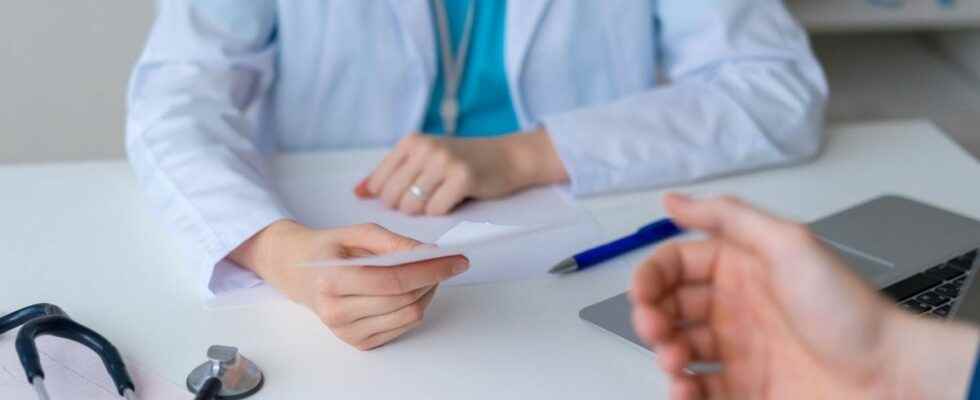Published on
Updated
Reading 3 mins.
Marie Lanen
Head of parenting section (baby, pregnancy, family)
Faced with identified cases of whooping cough due to Bordetella parapertussis, the High Council for Public Health has updated its latest report of action to be taken dating from 2014. Doctissimo enlightens you.
Pertussis is a bacterial respiratory infection. Two bacteria of the genus Bordetella are mainly responsible for pertussis syndromes in humans: Bordetella pertussis and Bordetella parapertussis. It is moreover the latter which prompted the High Council for Public Health to update its last report on the actions to be taken dating from 2014. Indeed, the recent identification of grouped cases of whooping cough due to Bordetella parapertussis has prompted the High Council for Public Health (HCSP) to study epidemiological, bacteriological and clinical data. The course of action in the face of one or more cases of whooping cough has therefore changed slightly.
In the event of whooping cough (symptomatic infection with B. pertussis), the High Council for Public Health indicates that “there is no need to modify the conduct to be followed around a case of whooping cough with B. pertussis such as proposed in the 2014 HCSP report, namely:
- the implementation of barrier measures around the case(s): hand washing, wearing masks (if possible);
- checking and updating the pertussis vaccination of exposed persons; antibiotic therapy of infected subjects in the first 3 weeks of evolution, favoring azithromycin, clarithromycin or (as an alternative) cotrimoxazole, with the aim of reducing transmission;
- the search for Bordetella by PCR test in symptomatic contact subjects. Multiplex PCR assays should not be used in this indication;
- antibiotic therapy of the following close contacts: – all unvaccinated or poorly vaccinated children (having received less than 2 or 3 doses depending on age) – children whose last vaccination dates back more than 5 years – all unvaccinated adults or whose last vaccination against whooping cough dates back more than 5 years the antibiotic therapy of occasional contact subjects at risk of a serious form and not protected by vaccination;
- in healthcare establishments, nursing homes and medico-social establishments (ESMS), the implementation of Complementary Droplet Precautions (PCG) – therefore isolation in a room only – as soon as respiratory signs appear, in particular coughing, without wait for pertussis diagnosis or bacterial identification. PCGs are lifted after 3 to 5 days from the first intake of antibiotics, depending on the chosen treatment.
- in the school environment, the eviction of suspected cases until the diagnosis has been invalidated and, if confirmed, until the patient has received 3 or 5 days of antibiotic treatment (depending on the molecule). Similarly, family members of a confirmed case who are symptomatic (cough) should avoid community access until they have been treated with 3 or 5 days of antibiotics. Informing the exposed population and monitoring it for 3 weeks after the end of the period of contagiousness of the index case makes it possible to identify secondary cases.
- Epidemiological monitoring of B. parapertussis infections is requested via Public Health France and the National Reference Center (CNR) for whooping cough and other bordelloses.
Pertussis, a particularly dangerous disease in infants
Since 1996, a surveillance network for pediatric forms of whooping cough has been set up (Réseau national de la whooping cough or RENACOQ). Indeed, if vaccination has made it possible to reduce the number of cases drastically, there is still a risk of transmission, intra-family, most often. Since the first pertussis vaccine is administered at 2 months of age, there is an increased risk of contamination before this age. For example, 157 infants with pertussis were identified in 2017. The disease is particularly serious in infants under 6 months, the elderly, those suffering from respiratory pathologies and pregnant women. Moreover, the High Authority of Health recommends vaccinating pregnant women against whooping cough from the second trimester of each pregnancy, preferably between 20 and 36 SA. If the vaccination could not be carried out during the pregnancy, the HAS recommends maintaining the cocooning strategy, which consists of vaccinating the family and the mother as soon as possible at the birth of the child.
